Connecting people to jobs and services week: The legislative path to make access the goal of transportation investments
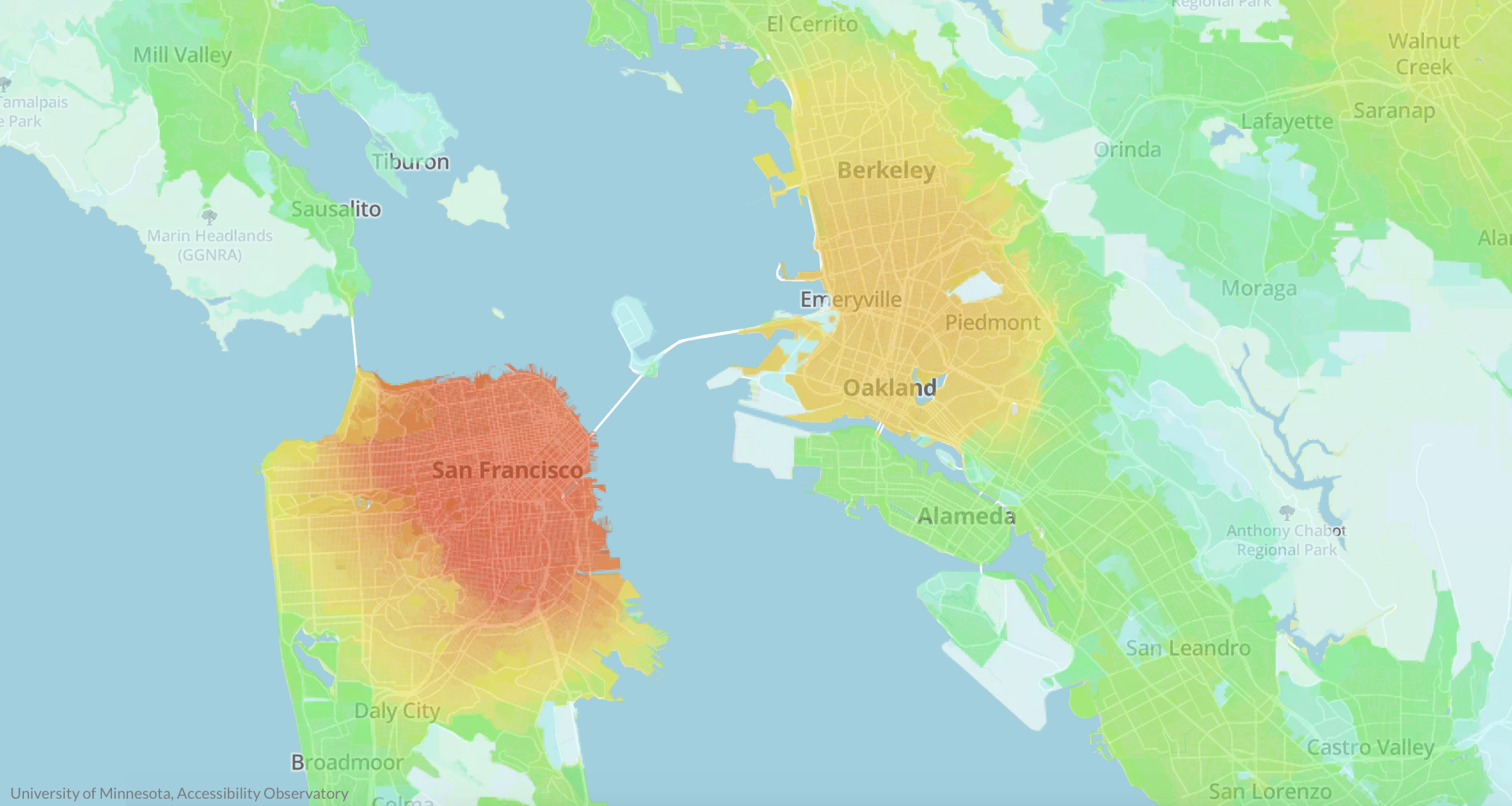 A heat map of bike accessibility in the San Francisco Bay Area. Lighter colors indicate fewer jobs can be reached within 30 minutes on “medium-stress” bike routes while darker colors indicate more jobs can be reached. Map via University of Minnesota Accessibility Observatory.
A heat map of bike accessibility in the San Francisco Bay Area. Lighter colors indicate fewer jobs can be reached within 30 minutes on “medium-stress” bike routes while darker colors indicate more jobs can be reached. Map via University of Minnesota Accessibility Observatory.
Measuring access—not vehicle speed—is smart policy. But local governments, states, and metropolitan planning organizations need support from the federal government to make this happen. It’s high time for Congress to make robust travel data and analysis tools available to transportation agencies.
It’s “Connecting people to jobs and services week” here at Transportation for America. All week we’ll be exploring why improving access should be the goal of the federal transportation program—not vehicle speed.
Having thousands of jobs within a region doesn’t do much good if residents don’t have convenient, safe, and affordable transportation options to reach those jobs. That’s why the concept of measuring whether transportation investments improve access to jobs and services can be transformative. Improving access to jobs and services, not merely aiming for high-speed vehicle travel within a corridor or minimal delay, should be the goal of our transportation investments.
But right now, the implicit goal of all federal transportation investments is to increase vehicle speed, not improve access. Changing the goal from vehicle speed to improving access requires rethinking our federal transportation policy from the ground up.
With the current authorization for federal transportation spending—the FAST Act—set to expire in 2020, it’s time for Congress to determine transportation policy for the next five to six years. Once passed, this legislation will set federal funding levels and policy for transportation for the bill’s duration. It is critical for this bill to reform the federal program to prioritize access.
We need to determine how well the transportation system connects people to jobs and services, and prioritize projects that will improve those connections. Congress should require USDOT to collect the data necessary to develop a national assessment of access to jobs and services and set national goals for improvement.
To do this, Congress should:
- Determine national connectivity: USDOT should develop a national assessment of access to jobs and services, and set national goals for improvement.
- Measure the right things: apply accessibility to the federal transportation program in performance management and project selection.
- Update standards: Phase out outdated metrics such as level of level of service.
- Use 21st century tools: USDOT should provide accessibility data to states, MPOs, and local communities.
States such as Utah, Delaware, Virginia, California, Massachusetts, and Hawaii along with the cities of Sacramento and Los Angeles are already utilizing this type of data and seeing results.
Unfortunately, states and MPOs must currently pay to access this data while far less useful congestion data is made readily available by USDOT.
A bill before Congress would pilot destination access; let’s take it a step further
Earlier this year, members of Congress introduced the bipartisan Connecting Opportunities through Mobility Metrics and Unlocking Transportation Efficiencies (COMMUTE) Act in both the House and Senate. This legislation would pilot measuring access nationwide. We are grateful for the leadership of Senators Baldwin (D-WI) and Ernst (R-IA) and Congressman DeSaulnier (D-CA) along with Reps. Curtis (R-UT) and McAdams (D-UT), in the House.
The COMMUTE Act would create a competitive pilot program to provide five states, 10 metropolitan planning organizations (MPOs), and five rural planning organizations with data sets to calculate how many jobs and services (such as schools, medical facilities, banks, and groceries) are accessible by all modes of travel. These data sets will also be made available to local governments and researchers.
In July, Congress took an important first step on transportation policy when the Senate Environment and Public Works (EPW) Committee approved its portion of a surface transportation reauthorization bill (America’s Transportation Infrastructure Act). We were happy the bill included a pilot program based on the COMMUTE Act to help a select group of states and metros measure whether or not their investments are connecting people to jobs and services. This demonstrated the bipartisan support for the common sense idea of measuring the success of our transportation system by whether it creates access to jobs and services.
But we can and should do more. Access to jobs and services has to be the core of any transportation authorization. Support for the pilot in the Senate indicates an opportunity to do much more. That is why we are urging Congress to go further and require USDOT to collect the data necessary to develop a national assessment of access to jobs and services and set national goals for improvement.
The House of Representatives will soon release its proposed surface transportation authorization. This is an opportunity to demonstrate a new vision for transportation, based on modern data and valuing what really matters.
It’s time for Congress to act and hold ourselves accountable for improving access.














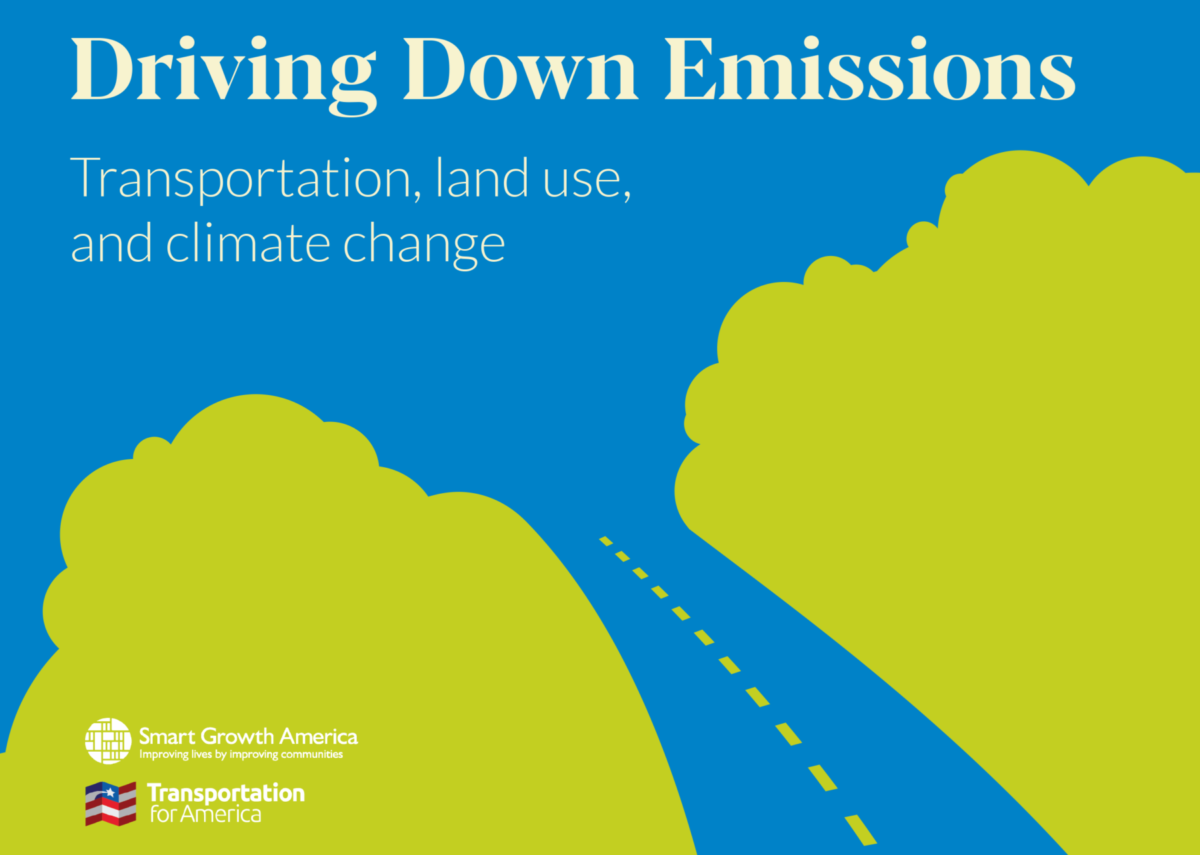
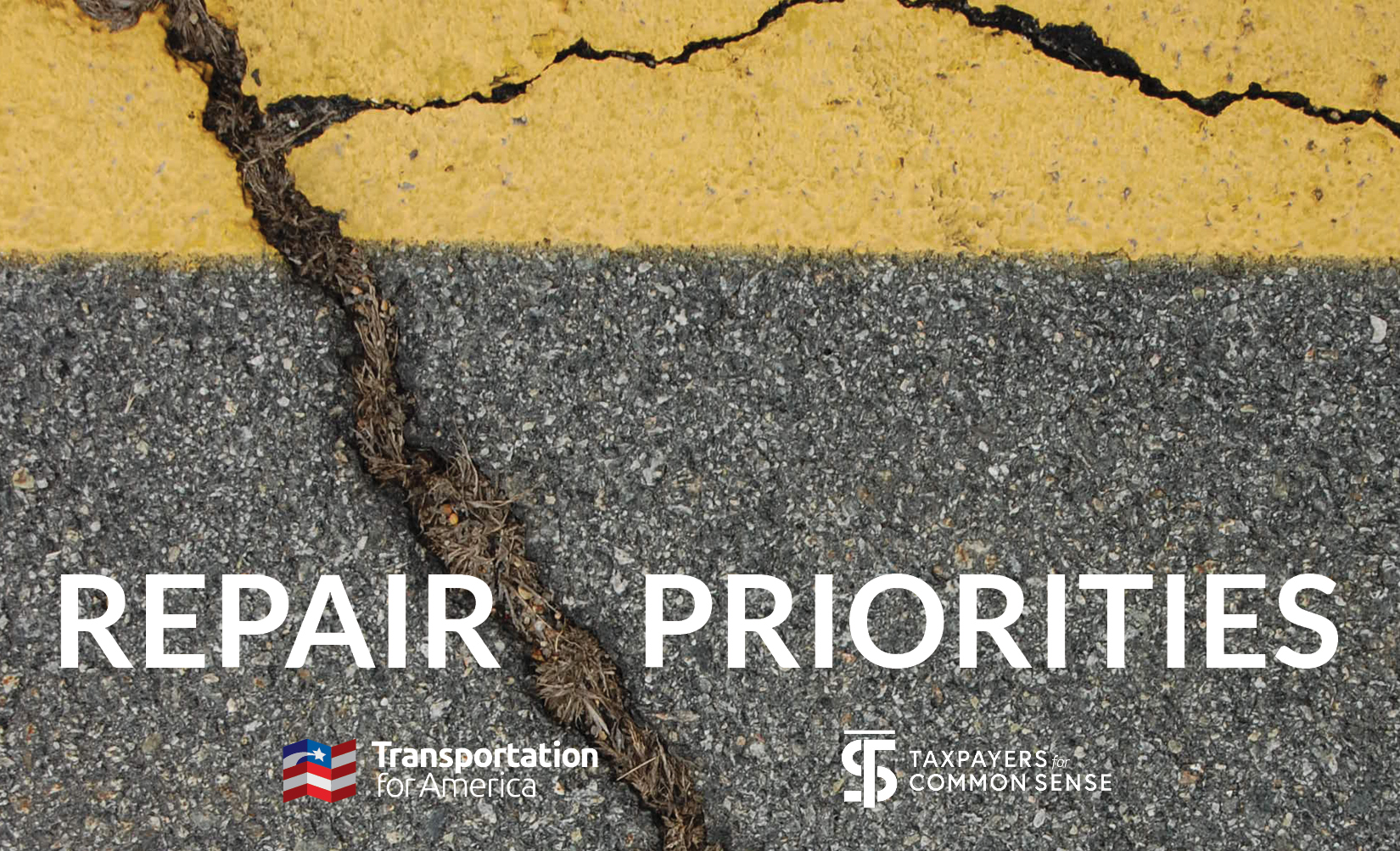
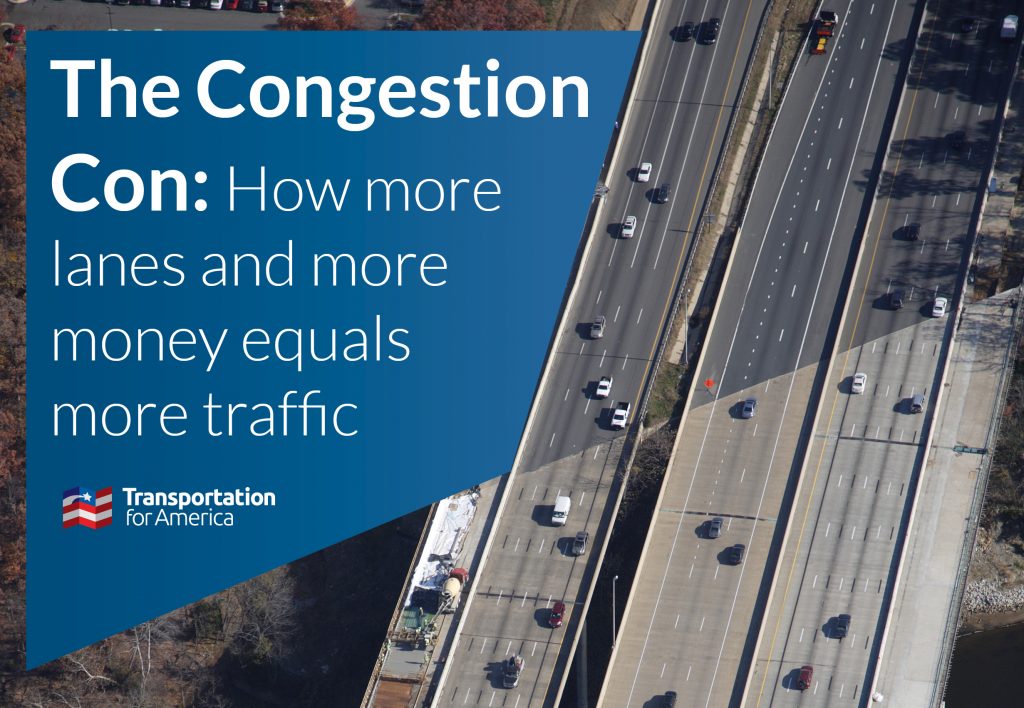
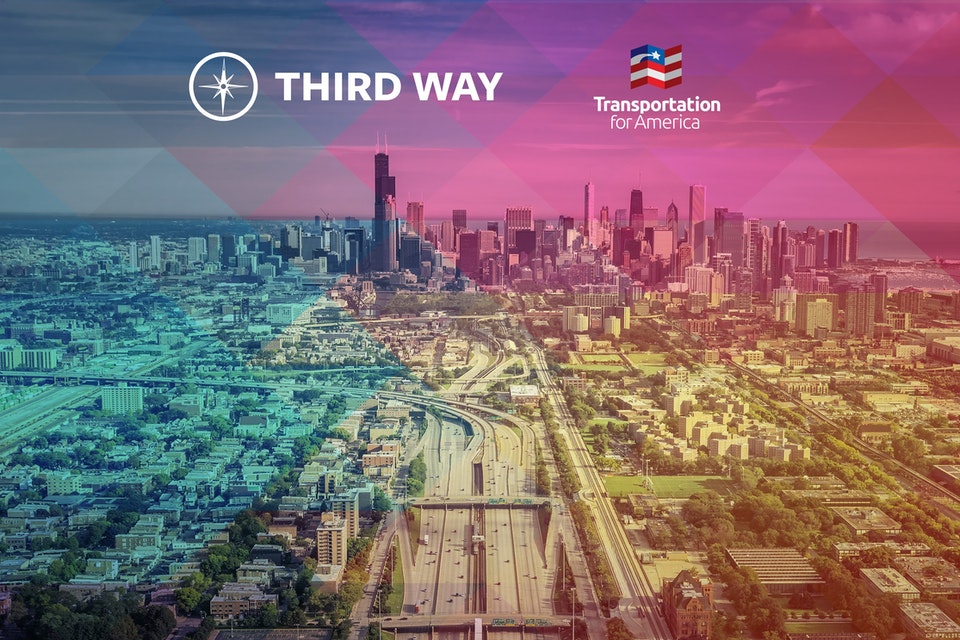

Pingback: Transportation For America – Connecting people to jobs and services week: Hey Congress, we need your help to measure access